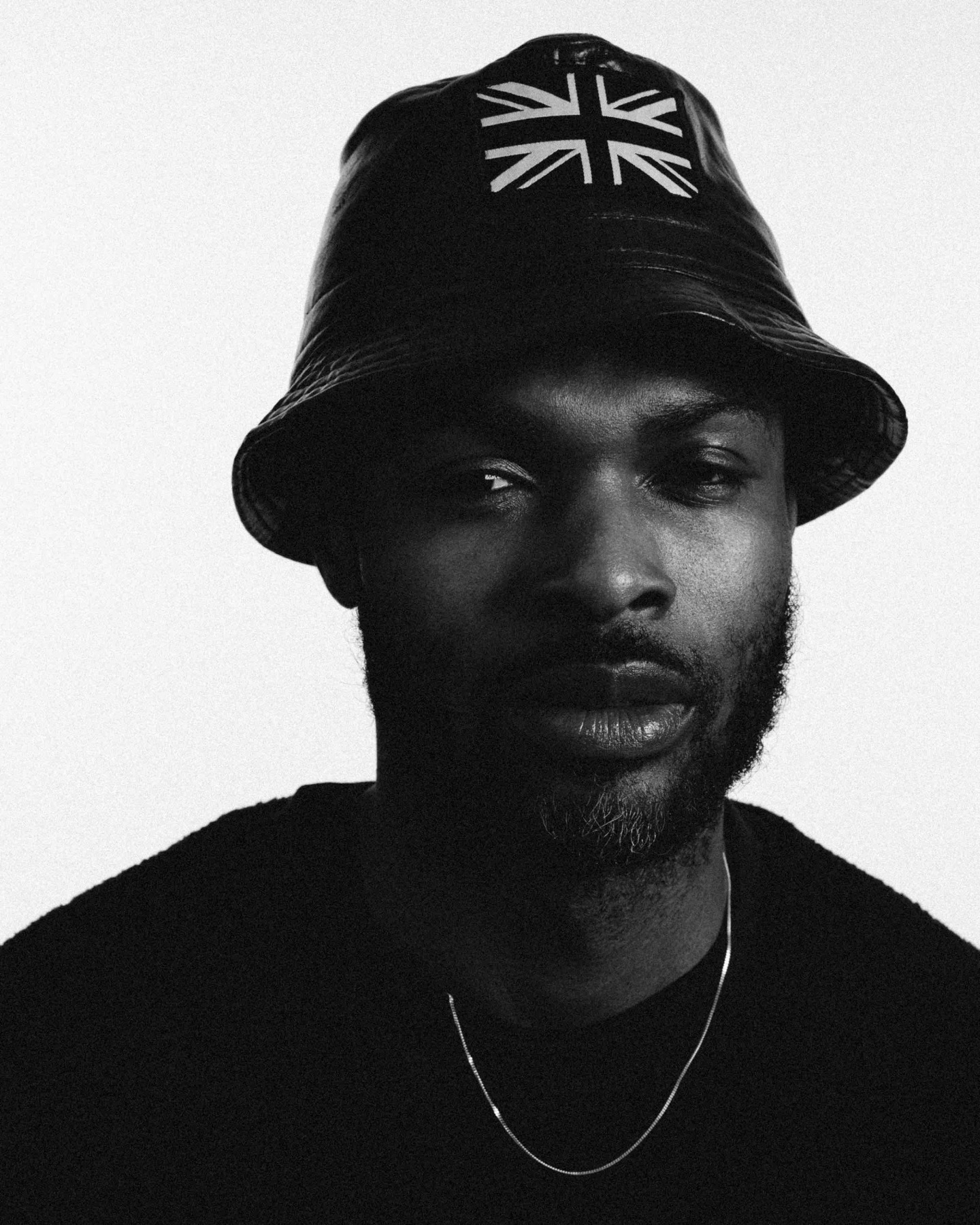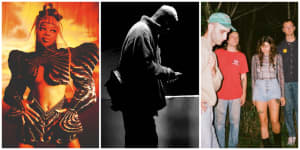How Actress Made Music Out Of Graffiti, Outsider Art, And A Robot
On his new album AZD, the vital London artist developed a revolutionary new process.
 Actress
Photo by Mehdi Lacoste
Actress
Photo by Mehdi Lacoste
“I’m not a nerd, d’you know what I mean?” Darren Cunningham, the electronic artist known as Actress, is discussing the gaps in his knowledge of the ancient instruments, relics of the birth of techno and house, that he used in the making of his excellent fifth record, AZD. The tech-obsessed can sometimes lord their practice over others as evidence of superiority. But when we spoke over Skype, Cunningham was humble as he mapped AZD’s constellation of influences as refreshingly as he makes them sound on record.
In fact, Cunningham bought the new gear to replace his established workflow of a laptop and drum machines; the number of these newly-purchased vintage devices grew and grew until they started to become appendages on a massive robot-like structure. He took to calling it AZD after the nickname that his friends and family have for him, and integrated it into a brand new “music system” he created — one that involves expanding the theoretical frameworks of music by consulting outside of its borders.
One of the many things that fed into the AZD system was the The Shard’s chrome exterior, which Cunningham catches a glimpse of from the window of his London apartment; in its warped reflection he sees chaos, and it’s not entirely uninviting. He was also drawn to the practice of other black artists: fellow outsiders like Ramellzee, a graffiti pioneer from New York, and James Hampton, a janitor from South Carolina who created a vast collection of totems and sculptures. Their work began to spur questions: Why is there such a relative lack of canonized black masters? Hampton kept his work a secret until his death in 1964. It made Cunningham wonder: Is the world that a work builds for itself in isolation enough to be considered art? These ideas, thoughts, and whims all helped grow AZD into a collage that is actively engaged with history's grip on the present.
Most of all, AZD compresses the space-time between the listener and an artist in the moment of curiosity-led creation. Listening to it feels like surfing on Cunningham’s neurons, catching glimpses of noise, long-shuttered Detroit warehouse raves, and French composer Gabriel Fauré cased in a grey resin-like haze. It’s a cipher, but an enchanting one.
The FADER spoke with Actress about his unique workflow in making AZD, which including transmuting graffiti to sound, boundless experiments, and listening to the radio to help him keep one foot in the real world.
Actress: AZD was a departure from my previous setup, [when] I was working very much off the cuff, much more instinctive. I just felt like I mastered that way of floating between being on the computer and maybe a couple of drum machines. Whereas now, aside from a few things you would call modern, I'm working with equipment which in today's landscape is quite limiting. But also, in other ways, it’s extremely complex, and I like figuring out those complexities, however frustrating I find it. Once they get into a natural flow, it's kind of [like] lightening: my eyes just go white, and I'm just going through it. I start to pick up a sense what the machine’s doing, and it's pointing me in a certain direction. When I'm not forcing it, it starts to guide you through the process a bit more, and that's the flow I like to get myself into because I think that's when the work becomes more authentic.
For me, it's just about creating a personal landscape of the things that I want to investigate. With this record, I was thinking about black art and how it's considered as naive art. Repatriation: finding things and making something new out of those things. With AZD, I wanted to build a machine, really. What was in my head was this Willy Wonka-style elevator, which is basically loads and loads of buttons [and] he knows exactly what every button does apart from one. I would buy vintage gear simply by how it looked, not necessarily by how it sounds. If it was silver and it was sick, I'd buy it; if it was black and it was sick, I would buy it. It had to fit within the body of this robot [made out of gear] that I’d created.
I wanted it to visually look like something that looked like it could be place in a white walled gallery. Once I’d done this work, the idea was actually to take [the robot] out live, but as it happened I had to take out windows just to get it into my studio, so to actually travel around with it wasn't logistically possible. [The robot’s] named AZD. The album is just a product of the programs that would go into AZD and the process that was affecting it as well.
“I would buy vintage gear simply by how it looked, not necessarily by how it sounds. If it was silver and it was sick, I’d buy it; if it was black and it was sick, I would buy it.”
All these recordings I was making, I'd just find my place in a session, and once I'd hit a spot, start recording and recording, do iterations of those recordings, and burn into CDs. I had a stockpile of at least 300 CDs of just recordings. Not tracks, just recordings. And then it was a case of just going back through those again, like they were discarded shards or whatever, and piecing them together. I don't really sit down and go, "Alright, I'm gonna make a track today." I just go, "Alright, I'm just gonna make things, and I'm gonna use different things to influence what that sound does."
I was looking at a lot of very primitive graffiti, in some cases bringing it into programs with multi-centers of sounds, and then affecting that bank with the graffiti [converted into sound]. That's what I found interesting, affecting the aspects of that sampler with something that's completely disconnected from it. The results started to influence the record. The holy grail for me was to be able to just sit down at a desk, write a few programs, and just feed it into the robot and it's already set up. I just have to hit the program and it creates what I want to make.
I use [AM/FM] radio to just keep in the now because — and, like I said, the reason why I was late for this interview — once I start working, time just melts. I'm constantly just working and that's what I use the radio for. I listen to two quite commercial record stations, one which just plays recognizable '80s music which is just instantly pleasing to me. But I'm still working so I'm listening to it for enjoyment, but I'm also focusing on what's being played, and what's going on in the music. If something takes my interest I'll write it down, or Shazaam it or whatever, and just research the music.
When I switch to more off-radar radio stations, it's for a different thing — it's like a sort of resistance to listening to the music that's not on a stay-able frequency, so you have to align with the frequency but also engage somehow with the music. I like that sort of level of interference, and this is why I like artists who go into that area of static and subtle noise, spectral noise, ambience and whatever. It’s just funny at times, because you'll try and tune it and this classical radio station will start to emerge into that whole thing, and this bashment with like flippin' Chopin’s whatever symphony playing in the background or something like that. That gives me inspiration more than anything else.
AZD is out now on Ninja Tune. Buy it here.
